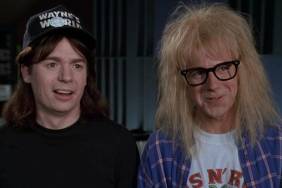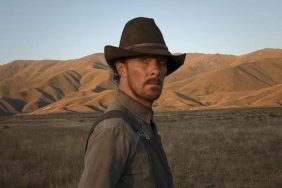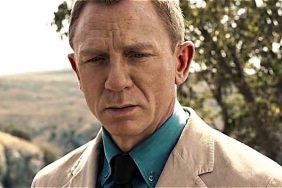There are few directors spoken of with greater reverence with Orson Welles, the actor/writer/director auteur who gave the world such classics as Citizen Kane and Touch of Evil. But that wasn’t always the case. The filmmaker’s career was a troubled one, with very few box office successes to his credit, and for the last several decades of his life he traveled the world shooting independently, rarely finishing his films, and leaving pieces of them scattered across the globe.
Stefan Droessler, the curator of Welles’ work at Film Museum in Munich, has set about the task of finding these missing pieces and reassembling them, like a art house version of Indiana Jones. His latest reconstructions are playing this week at the Museum of Modern Art (MoMA), and include a work print of Orson Welles’s 1969 TV production of The Merchant of Venice and a work print of The Deep, based on the thriller by Charles Williams that would, decades later, become the basis for the 1989 thriller Dead Calm starring Nicole Kidman.
We spoke to Stefan Droessler over the phone to discuss his important task, finding and restoring Orson Welles’ remaining films before they are lost to time, and learn more about how he put the many pieces of footage back together into films of which Orson Welles himself would actually approve.
“The Unknown Orson Welles” is part of MoMA’s “To Save and Project” film preservation series, which runs throughout the month of November. Visit the official website for more details.

The Deep [work print]. 1967. Directed by Orson Welles. Courtesy Munich Filmmuseum
Crave: The prospect of lost Orson Welles footage being found has long fascinated all of us. Can you tell us about the process of finding some of the material we’re seeing at MoMA this year?
Stefan Droessler: For Welles, the material is Merchant of Venice, which we were able to reconstruct. Of course we knew that in different places are different fragments. The problem is to get them together and to find a way to put them together in a context. [We] joined forces to work on it. Welles left material in quite a lot of different places where he lived and worked, and then it stayed […] laying there, and transferred to different vaults […] until it finally ended up in an archive. This is in general how it happens.
Sometimes in another case, this year we got a message that in the vault of a television producer was a reel of The Deep material, and fortunately we could find an agreement with the children of the producer that they gave it to Munich and now we try what we can save out of this material. Because very often now material has lost its colors and is in pretty bad shape, or already started to deteriorate so that the material will have [only] moments to save it. I think if we wait to long, at a certain moment it will not be possible to find material because if you find it, it is already in such bad shape that you can hardly work with it.
How much of The Deep were you able to reconstruct?
Most of The Deep was filmed. Orson had different work prints he put together. His work prints were always very special. Orson put things together, in the beginning in a rough cut, he only put different rushes, or different rushes of one shot. He edited certain pieces, sometimes in different edits or he put in the work print different versions of the same scene. Sometimes he put blanks [or] numbers of the shot which had to be done later, because the editing and the shooting for him went, on his own projects, on at the same time. It was not in the traditional way where you shoot and then you edit and then you’re finished. […] Orson already edited during the shooting.
So from this material we have two different work prints which are slightly differently edited. We put some scenes together so you have now a rough cut, which is too long, much longer than the final film would have been. There’s no music. There is partly no soundtrack because he wanted to dub the movie, finally. So it is a special experience. You need some imagination to see the quality of this material. It has a live commentary by me from time to time in which I explain missing scenes or certain shots so that you can understand the storyline.

The Merchant of Venice. 1969. Directed by Orson Welles. Courtesy Munich Filmmuseum
Can you tell me a little bit about Welles’ version of The Merchant of Venice, and how it is distinctive?
The Merchant of Venice was always a difficult project because we knew that he didn’t film the complete piece by Shakespeare. He had a special version of it. He knew he had to reduce it to something of 40 minutes and it always known that the part of Portia didn’t appear, which made it very difficult to imagine how the hell he wanted to finish the piece without this one character.
In the ‘90s one reel was found, about eight minutes, which is pretty known. You can find it in certain documentaries. But you didn’t know exactly which piece of the film it is. In Italy, [they] now had two more reels of this film, so we have about half an hour which was filmed and which we could get together in a certain order. The problem is that in the last reel the sound is missing. Fortunately we could find the script of Orson Welles, which gave us an idea of the ending of his Merchant of Venice and which dialogue he put in the film. This was a situation with which we could work. We had fortunately also the complete music, it was already recorded, and [we had] a lot of notes which gave us instructions about the montage of the film.
So we found out that the final scene, Orson cut the drama and it ends before the court scenes. You know, there’s a trial at the end of the play, and Orson was not interested in it. He was only interested in the character of Shylock. So he reduced the play to the scenes with Shylock and stopped it before it comes to the trial, when Shylock is doing the long speech. For Orson it was very important that Shylock is not the bad guy. He always thought of Shylock as the victim of antisemitic Venetian society, so it ends with Shylock blaming the others and showing that he is a victim, not the greedy moneylender as some others may have interpreted Shylock in the drama.
The biggest problem for us was what to do with the missing soundtrack. We had only two choices. We could try to do intertitles, which did in certain scenes when a sentence was missing in the sound, but here is complete dialogue so we cannot put in too many intertitles. It doesn’t work. The other possibility was to dub it but it’s virtually impossible to dub Orson Welles. His voice is so important for his characterization and for his acting that we finally came to the solution to use a recording by Orson of the same play from the ‘30s, because we found out that he didn’t the Shakespearean sentences. He cut the sentences and he changed the order but the original sentences he kept intact. So we have at least the voice of Orson.
So it was a big challenge and we used all digital trickery to get his voice from the ‘30s together with the images of the ‘60s, and we have it nearly lip synched. In the middle of the film now you have a change in the voices. It’s a little bit strange but at least now you can see the film and get an impression [of] what Orson Welles wanted to do with The Merchant of Venice.

RKO Radio Pictures
It seems as though the Holy Grail of lost Orson Welles material would be the completed version of The Magnificent Ambersons. [Editor’s Note: Which is not, of course, playing at MoMA.] Would you say that’s true?
Well I always have problems to evaluate the things which are more important and less important. I also like very much his little films, his b-pictures, all these little crime films from Lady from Shanghai to Touch of Evil, which were never “A” productions but I like them also very much, sometimes even more than his very ambitious big productions.
So I have problems [deciding] which is more important and less important. But The Magnificent Ambersons is definitely one of the big losses and it is a film which was changed a lot, and if you see the long version it really has a different character. You can see there were attempts to recreate this long version. The film material is missing but some shots exist, the music exists, and when you put this together you already get a different impression of this film. But this material rarely shows up.
It’s a big hope, everybody hopes, but it is not so likely that we one day will find one of these work prints which were sent to South America during the production. The negative is definitely destroyed.
It sounds exciting to be able to discover something after tracking it down forever, and thinking it was lost. Can you tell me a little bit about what that’s like, emotionally?
Well of course! [Laughs.] It is always the luckiest moments when you suddenly find something or get information that something has survived. I think every restorer is hunting for this. Of course I had moments, not only with Orson Welles material. I remember that I was hunting for many years for Laurel and Hardy speaking in German language and when I finally got a message from Moscow that they had something – and for many, many, many years I was looking for it – I couldn’t believe it until I could hold it in my hands. It was of course an experience.
The other film which also was shown in the MoMA program, Homunculus is a silent film which was thought to be lost, and for many many years I was looking for little fragments. The main source again came from Moscow, and suddenly from the Moscow Film Archive somebody told me, “Yeah, we have [the] material. Nobody can work with it. The titles are missing. We tried to get order in it but it is impossible. Nobody can use it.” I said, “Okay, give it to me. I will try.” I needed many years to [put] it together, to identify each shot. It was a lot of work but I had the feeling one day I would succeed. It is possible, and I like very much to work on films where everybody’s saying it’s impossible to do it.
The Merchant of Venice is also such a case. When we have these elements it’s wonderful but we didn’t know, we didn’t have the sound and nobody had an idea how to go on with this film that we can have something to present to the public, so that everybody can understand what Orson wanted to do. And then to have an idea, to find a solution. This is in my eyes also a quite creative job, and I like my job, especially we succeed and suddenly say, “Oh wow, this is the way to go.”
The moment to present it to the public is of course always a lucky experience, to see if it works, if people appreciate it. And sometimes we even have to change something, because for me it is an ongoing process. After one or two screenings, I’ve got some responses and I have an idea to change something, [then] at a certain moment I say, “Okay, this is now the final version.”
Top Photo: Journey into Fear. 1943. USA. Directed by Norman Foster. Courtesy Munich Filmmuseum
William Bibbiani (everyone calls him ‘Bibbs’) is Crave’s film content editor and critic. You can hear him every week on The B-Movies Podcast and watch him on the weekly YouTube series Most Craved and What the Flick. Follow his rantings on Twitter at @WilliamBibbiani.





